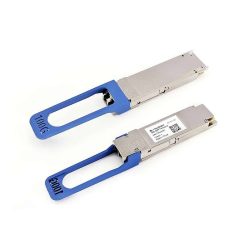The current communications market is full of a variety of fibre optic transceivers, such as QSFP, QSFP+ and QSFP28. Despite being visually similar, there are differences in performance which would significantly impact your network performance. You will also find each of these module form factor types under the Multi-Source Agreements, or MSAs as the industry is familiar with.
QSFP are compact, hot-pluggable optical transceivers used for optical data communications and networking requirements. The ‘QSFP’, which stands for Quad Small Form Factor (four channels of data), supports Ethernet, Fibre Channel, InfiniBand and SONET/SDH standards with different data rate options.
The QSFP form factor came after SFP pluggable modules (Small Form Factor), allowing 4 times the data rate from the same module. SFP pluggable modules can hold data rates up to 25G when QSFP modules can hold up to 100G and 200G network speeds with either a QSFP28 or QSFP56 transceiver.
What is a QSFP28?
The QSFP28 form factor is the next generation after QSFP and QSFP+, designed typically for 100G data rates. These transceivers integrate 4 transmitters and 4 receiver channels. The ‘28’ explains how each lane carries up to 28G data rate (4 x 28G channels). QSFP28 modules also have almost identical form factors to QSFP+ meaning they can also be used for 40G applications as well as 100G. It is worth mentioning the reverse cannot be said for adding a QSFP+ module is a QSFP28 port.
QSFP28 and QSFP+ mainly differ in data rates and breakout connections.
Types of QSFP28 Optical Transceivers
QSFP28 modules are generally used in 100G optical transceivers. There are two main types of QSFP28 transceivers, short-range and long-range. Short-range QSFP28-SR4 optical transceivers support connections up to 100M over multi-mode fibre. Long-range QSFP28-LR4 optical transceivers support connection up to 10km over single-mode fibre.
Get in touch with our team today to help you find your components.
